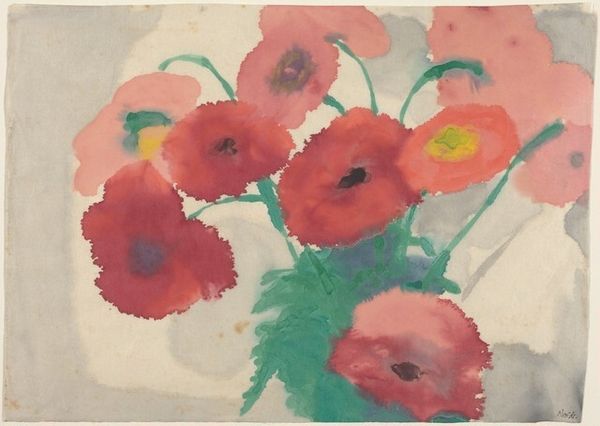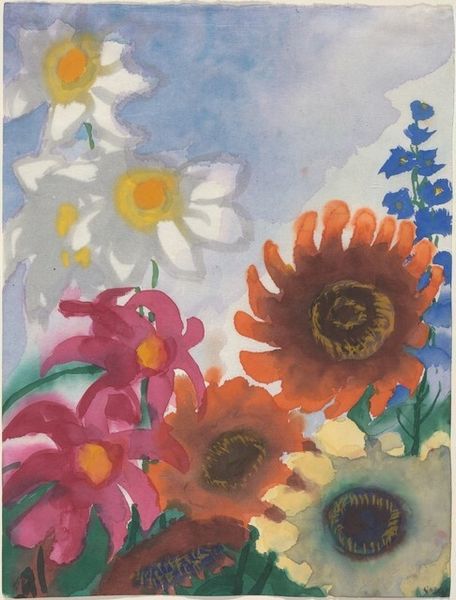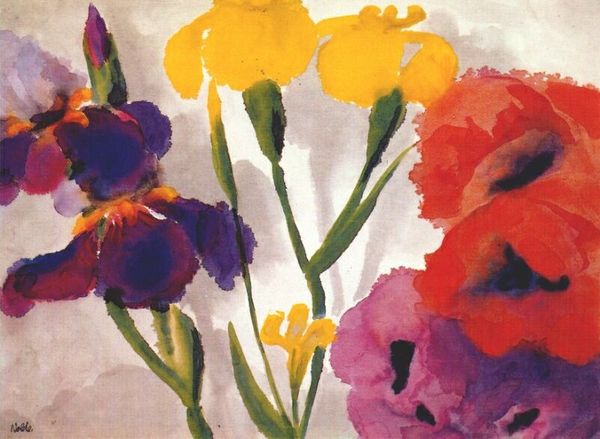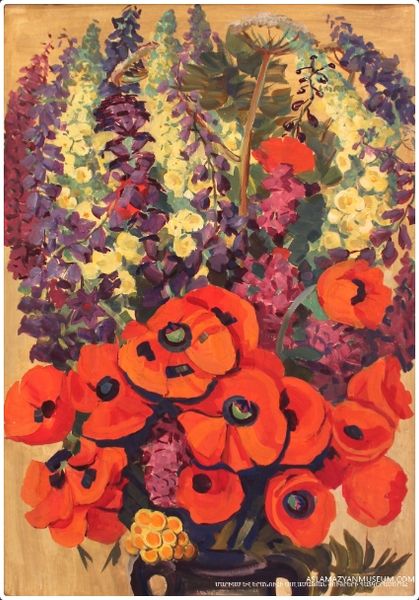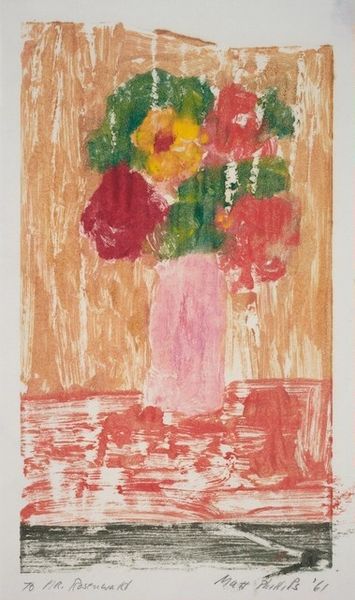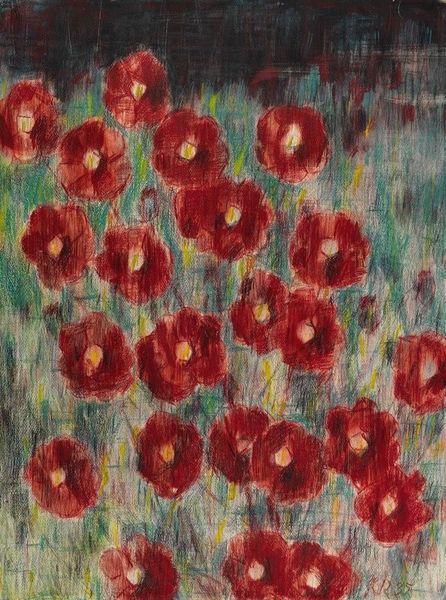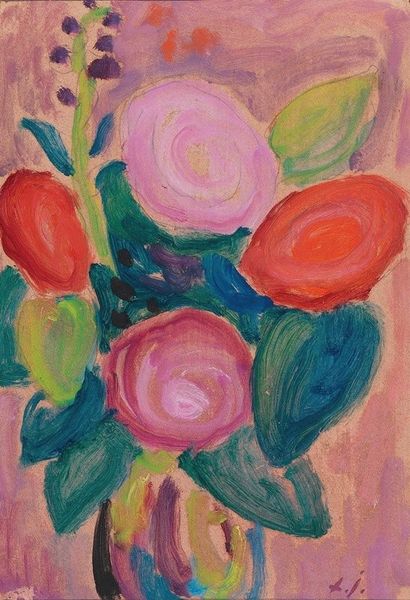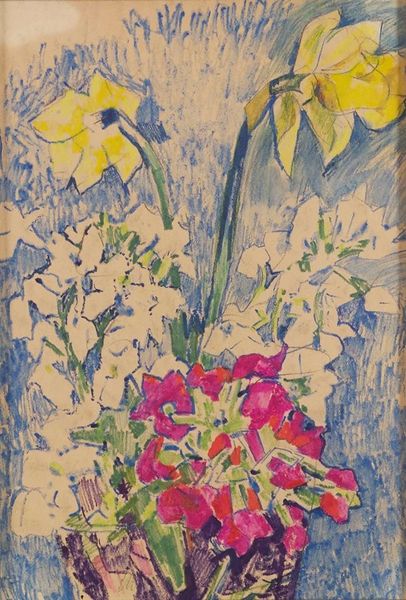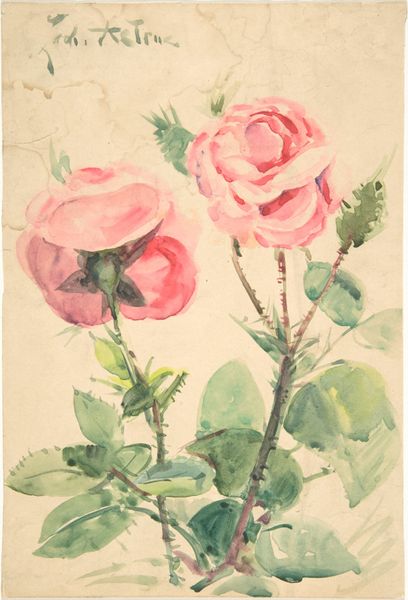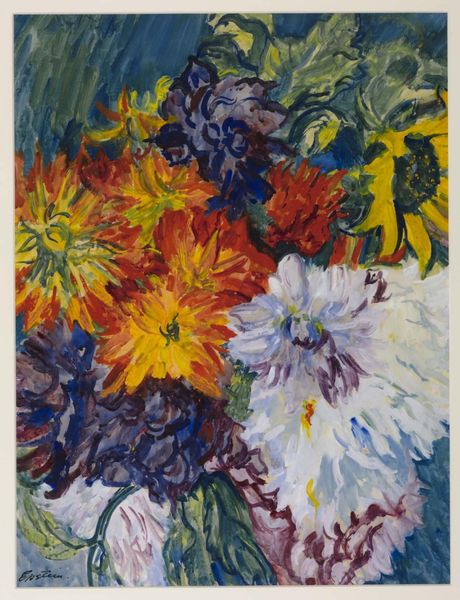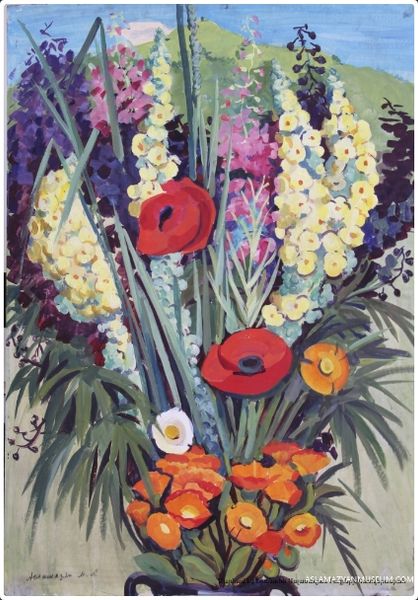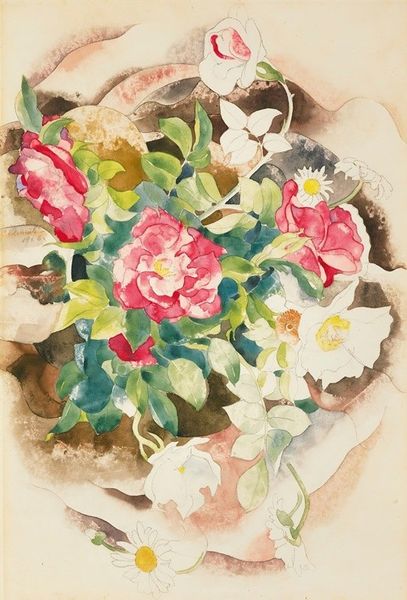
Dimensions: overall: 27.8 x 45.4 cm (10 15/16 x 17 7/8 in.)
Copyright: National Gallery of Art: CC0 1.0
Curator: Looking at this artwork from between 1930 and 1940, identified as “Red and Yellow Poppies with a Blue Delphinium,” made with watercolours, my initial reaction is to sense a kind of yearning, a reaching out. Editor: Watercolours… I notice how the pigments have been applied almost sketchily, a seemingly quick capture of the flowers. Did he mix his own pigments? I’d like to know where they sourced. Curator: Nolde had quite an intense colour theory practice. These blooms seem to float rather than being grounded, like emotive states almost. The poppies have a long history in art, typically associated with sleep and death. And we know how he uses colour as coded signs. Editor: The visible texture of the paper also plays a role. See how the colour pools in some areas? The fluidity contrasts sharply with the rigidity one expects of materials produced within a state structure like the Third Reich. It also suggests how fast and efficiently he was forced to paint. Curator: Interestingly, he classified himself as an Expressionist. The loose forms and the choice of these evocative symbols can be seen as an intense psychological landscape—a landscape from the inside. Poppies as an indicator for mourning, for passing of better times. Editor: Yet this loose handling also served an important function in art education: to flatten traditional hierarchies between painting and crafts. Were these works like this displayed, celebrated or kept in secrecy to resist censorship? Curator: He would have certainly experienced significant anxiety around producing politically unsanctioned work at this point. His mental state would have certainly affected this sense of lightness of touch. What lingers for you after considering all that? Editor: The economy of his labour; its efficiency points to Nolde as both canny and, sadly, probably in survival mode. I appreciate that urgency of expression and its testament to a maker pushing against limits. Curator: The symbolism, coupled with his bold colour choices, make it into a compelling record of the relationship between external oppression and inner experience. A conversation carried by plants.
Comments
No comments
Be the first to comment and join the conversation on the ultimate creative platform.
